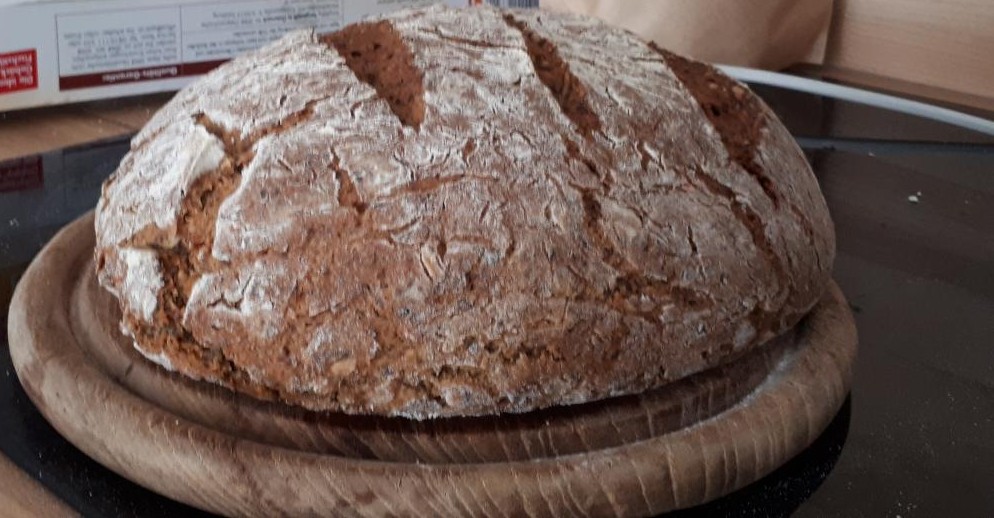


Mission success on making a decent sourdough at the restaurant, last two batches turned out very nice (and consistent). Previous crumb issues were due to lacking fermentation from a weak starter. Began feeding it twice a day and now it doubles in 3 hours instead of 5.
Also made sure to use warm water in the dough to kickstart the fermentation and mix some of the water into the starter to make it mix more evenly into the dough, avoiding uneven fermentation.
Furthermore, I’ve begun ‘over-mixing’, doing 5 minutes on low speed and 5-6 minutes on high speed in the mixer, letting the dough rest a few minutes when it starts to tighten too much. Makes it much easier to work with during the bulk ferment.


Love the ear and the blistering on the crust! And that is a very active starter. Sounds like the kitchen is pretty warm.
Re: your previous post, you might get a softer result with some diastatic malt powder. I’ve been messing around with it and it does help with specialty flours.
The other thing you could try is a cold autolyze by mixing your flour and water and chilling overnight. It makes good gluten development easier; downsides are you might have a hard time working in the salt and starter with a machine. A 2 hour fermentolyze with starter, flour, and water also helps but working in the salt is still annoying.
Thank you! Right now I’m doing a quick autolyse and then a quick saltolyse (?), around 10-15 min each, I’ve tried with a longer autolyse where I mix it at the same time I’m making the levain, but couldn’t see a big difference. Keeping some water back and dissolving the salt in that before mixing helps with the distribution a lot. Gluten development is not a problem right now, I actually had to cut back on the Manitoba flour, replacing a third with AP because it was getting too tight.
Dissolving the salt in water first is a great idea - I’m going to have to try that. I’m also surprised that you can get away with a such a quick autolyze but Manitoba is a really strong flour.
What’s your final hydration percentage?
Yeah it’s nuts how stiff the dough can get, even with a lot of water.
Right now I’m doing ~83% hydration, feels like a good balance between open crumb and ease of handling.
That’s impressively high! I should see if I could find some Manitoba to try. The high gluten flour around here is called Small’s and it’s 15%. I like using it at about a 20% ratio in bread and pizza and I’ll run about 75% hydration, but my stuff turns out pretty slack a lot of the time.
tbf having a giant restaurant grade mixer with a dough hook is doing a lot of lifting here, this dough also gets really slack if I don’t mix it right or use too much AP. Had one batch go completely gloopy because my starter was old, way too sour to develop gluten
Oof, that sounds like a big mess. How much do you make at a time?
You are close to conquering it.
Gorgeous bread!




